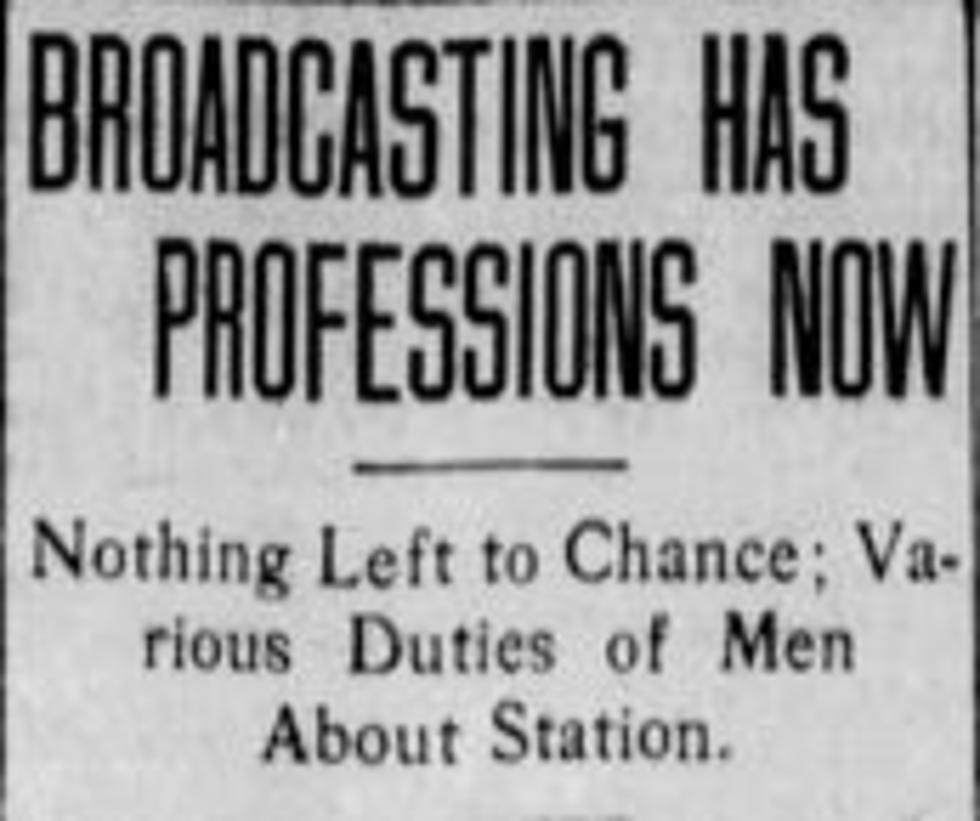
Harmon’s Histories: Waxing nostalgic about the early days of radio broadcasting
By Jim Harmon/Missoula Current
OK, I admit it. Now that I’m in my 70s (frighteningly near the big 8-0), I find myself looking back at life considerably more than I ever did in my younger years.
One thought came to mind recently that shocked me. It shouldn’t have, but it did. It’s all about perspective.
When I started my broadcasting career in 1960-61 (as a teenager) at the little hometown station in Libby, I had no idea how long that career would last. Well, it lasted nearly 50 years (49, to be exact).
But that wasn’t the stunner. It’s that my 49 years in the radio and television business spanned nearly 50% of the entire history of broadcasting!
Radio broadcasting and its pioneers (men like Marconi, DeForest, Fessenden and Stone) made their remarkable discoveries in the early 1920s, and here we are in the 2020s – 100 years later.
On March 22, 1920, the Washington D.C. Herald newspaper and the George W. Parezo Electrical Supply Company sponsored a contest for local amateur radio operators.
The categories were (two winners in each): Best Essays, Best Photographs and Best 200-Word Descriptions of Contestant’s Radio Equipment.
The contest judges, including Alexander Graham Bell, declared “the essays and other work first class.”
Among the winners was J.G. Spraker, who described his radio receiving equipment as “of my own design and make. The enclosure panels are of Bakelite and the cabinets are polished oak. All wiring is of No. 16, bare insulated, with varnished cambric. All connections are soldered.”
In the three years that followed, near-unbelievable advances were made.
In December 1923, Waldemar Kaempffert, a “noted technical expert,” described the transition from the “the first timid experiments” with radio signals to the birth of the “broadcasting business.”
That business created a whole new language and job descriptions. There were terms like “Broadcast Studio,” “Power Room” and “Master Clock,” and job titles like “Director of Broadcasting,” “Power Man” and “Announcer.”
Kaempffert wrote, “It was evident from the very beginning that the transmitting microphone could not be set up in any convenient room without making elaborate changes. Footfalls, echoes from bare walls, and the slamming of doors were transmitted with startling distinctness.”
“The studio of today,” he wrote, “is a specially constructed room. It has a rather funereal appearance because its walls are draped with heavy fabric to prevent sound reflections.”
“There are intercommunicating telephones, signal lights and a well-drilled organization to make broadcasting little short of perfect. Nothing is left to chance.”
In the 100 years since Waldemar Kaempffert’s essay, amazing advances have been made.
Westinghouse’s KDKA radio station transmitted presidential election returns on Nov. 2, 1920. The Department of Commerce became the first licensing agency for broadcast stations, granting 30 such licenses in 1922.
Many times along the way, pundits have attempted to declare radio “dead,” but it simply has transitioned with the technical advances.
Today we have AM, FM, analog, digital, optical fiber, the Internet, iTunes, podcasting, Sirius XM, iHeartMedia, and on and on and on.
Thankfully, paraphrasing Don Henley and Glenn Frey, you can “stab it with your steely knives, but you just can't kill the beast.”
Long live radio!
Jim Harmon is a longtime Missoula news broadcaster, now retired, who writes a weekly history column for Missoula Current. You can contact Jim at fuzzyfossil187@gmail.com. His best-selling book, “The Sneakin’est Man That Ever Was,” a collection of 46 vignettes of Western Montana history, is available at harmonshistories.com.
